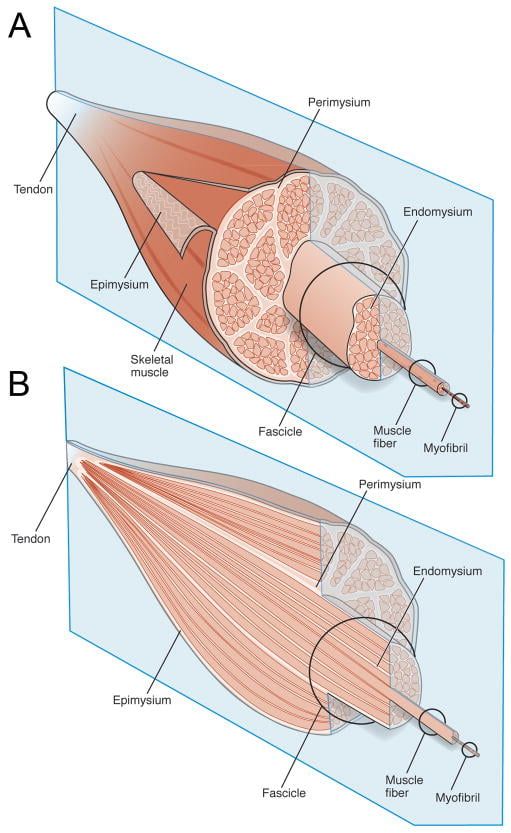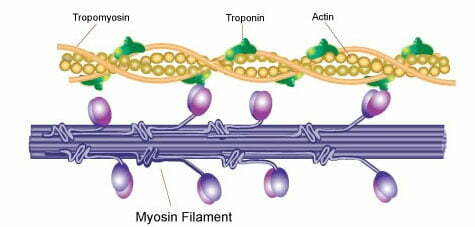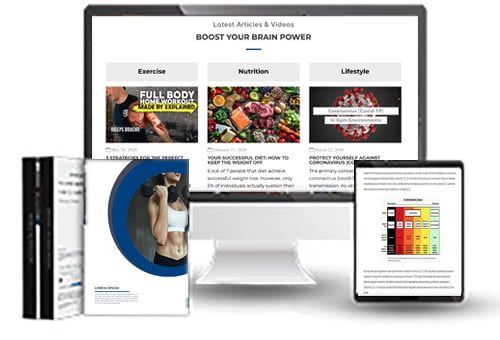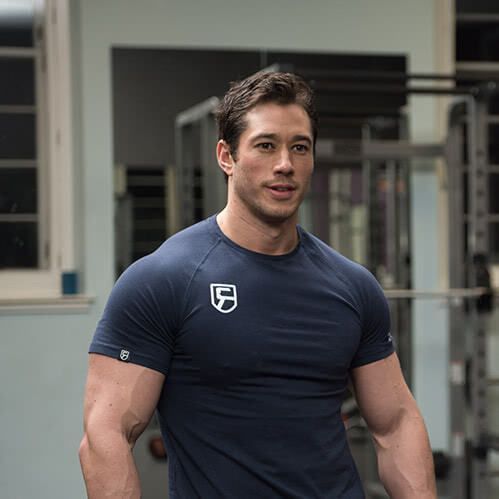
YOUR FITNESS BLOG
3 Big Factors Influencing Muscle Growth
Muscle growth, more formally known as muscle hypertrophy, is a primary goal within exercise. Lean muscle mass helps to create the appearance of a toned and defined physique in addition to contributing to enhanced muscular strength. When working with a personal trainer on weight lifting, the overload stimulus caused by resistance leads to disruptions in the muscle fibers and extracellular matrix [7]. Muscle fibers are the cells or basic building blocks of muscle and the extracellular matrix can be thought of as the physical scaffolding of muscle [7].


Mechanical Tension
It is theorised that resistance exercise creates tension on muscle and disrupts its structural integrity [7]. During resistance exercise, there is greater force production and stretch on the muscle which causes mechanical and chemical changes on a molecular and cellular level. These changes lead to an increased rate of muscle protein synthesis, which is the building of new muscle proteins, essential for muscle growth [7].
On a cellular level, mechanical tension contributes an important cell signaling process involving a protein called mammalian target of rapamycin or mTOR [1, 7]. This specific protein is highly important to muscle hypertrophy because there is a direct relationship between mTOR and muscle protein synthesis [1]. Increased mechanical tension during resistance exercise by way of lifting heavier weights, enhances mTOR activation resulting in more muscle growth [1].
Passive tension, which is created during the eccentric, or lengthening phase of a lift, helps to further increase the active tension on a muscle or the contraction phase of a lift, which enhances the hypertrophic response [7]. Importantly, mechanical tension is directly related to intensity, defined as load or amount of resistance applied. The greater the load applied during resistance exercise, the greater the mechanical tension placed on the muscle.
3 Factors Influencing Muscle Growth
Muscle Damage
It is well established that resistance exercise can lead to localised muscle tissue damage [7]. A previous blog post examined the causes of delayed onset muscle soreness (DOMS) and identified microtears to the connective tissue, contractile elements of muscle and surrounding structures as a primary cause of DOMS. This damage to muscle results in an acute inflammatory response [7]. During this inflammatory phase, neutrophils, macrophages and lymphocytes, all types of white blood cells that help fight infection, migrate to the damage site to clean unwanted debris [7]. The release of these white blood cells along with other cells are believed to result in the release of growth factors that regulate the rapid increase of highly important healing cells known as satellite cells [7].
Satellite cells are the equivalent of stem cells, but in the muscle [6]. They are considered the limiting factor in muscle development and increasing their activity stimulates more muscle growth [6]. Satellite cells are located close to a muscle fiber and remain inactive unless awoken by strenuous exercise [6]. Once awoken by exercise, these cells multiply and bind to existing muscle fibers to supply the precursors required for repair and growth of new muscle tissue [6]. Therefore, muscle damage, up to a certain level, can promote increased activation of satellite cells and ultimately muscle hypertrophy.
Metabolic Stress
The hypertrophy effects of metabolic stress are attributed to the production of metabolic byproducts in the blood during strenuous exercise called metabolites [6]. These metabolites include lactate, hydrogen ion, inorganic phosphate, creatine and others [6, 7]. It theorised that this build up of metabolites are achieved by increasing water within muscle, a phenomenon known as cell swelling [6]. There is evidence suggesting cell swelling increasing muscle protein synthesis while simultaneously decreasing protein breakdown, creating an anabolic effect conducive to muscle growth [6].
It is hypothesised that cell swelling occurs as a self-preservation mechanism [6]. Analogous to over-inflating a rubber tire, increasing water in muscle cells exerts pressure agains the cell wall [6]. This pressure is likely perceived as a threat to muscle integrity and the anabolic response is initiated to strengthen muscle structure [6].
The hypertrophic effects of metabolic stress can be found in Kaatsu training studies, where resistance training is combined with blood flow restriction [5]. Kaatsu training utilises low intensities (generally <40% 1-repetition maximum), while using a blood pressure cuff to induce muscle ischaemia (reduced blood flow to muscle) [5]. A number of studies show this method of training produces an anabolic effect, muscle protein synthesis and leads to marked increased in muscle hypertrophy [3, 4].
Summary
The processes responsible for muscle hypertrophy are complex and not well understood. However, it is suggested that mechanical tension, muscle damage and metabolic stress are primary mechanisms contributing to muscle development [6]. Although each mechanism exhibit different physiological effects, they do not act independently, but rather work in concert to produce anabolic effects for muscle hypertrophy [6]. Importantly, only an optimal combination of training variables within a resistance training program can maximise the anabolic effects of each mechanism. A well organised resistance program that manipulates intensity (load) and volume (repetitions and sets) are essential for encouraging muscle growth.
References:
1. Drummond, M. J. et al. 2009. Nutritional and contractile regulation of human skeletal muscle protein synthesis and mTORC1 signaling. Journal of Applied Physiology. April. Vol.106, No. 4, pp.1374-84.
2. Frantz, C. et al. 2010. The extracellular matrix at a glance. Journal of Cell Science. December. Vol.123(Pt 24), pp.4195-200.
3. Fry, C. S. et al. 201. Blood flow restriction exercise stimulates mTORC1 signaling and muscle protein synthesis in older men. Journal of Applied Physiology. May. Vol. 108, No. 5, pp.1199–209.
4. Loenneke, J. P. et al. 2012. Low intensity blood flow restriction training: a meta-analysis. European Journal of Applied Physiology. May. Vol. 112, No. 5, pp.1849–59.
5. Schoenfeld, B. J. 2013. Potential Mechanisms for a Role of Metabolic Stress in Hypertrophic Adaptations to Resistance Training. Sports Medicine. March. Vol. 43, No. 3, pp.179-194.
6. Schoenfeld, B. J. 2013. The Max Muscle Plan. Human Kinetics: Champaign, IL.
7. Schoenfeld, B. J. 2010. The mechanisms of muscle hypertrophy and their application to resistance training. Journal of Strength and Conditioning Research. October. Vol. 24, No. 10, pp.2857-72.

Did you find this content valuable?
Add yourself to our community to be notified of future content.

